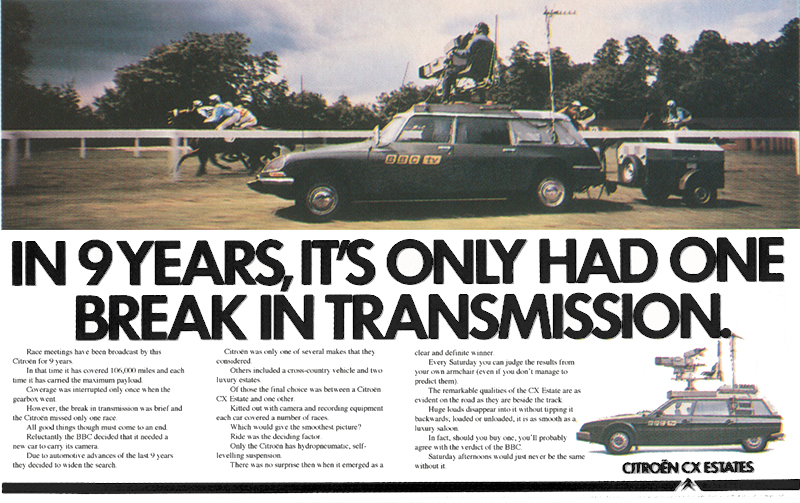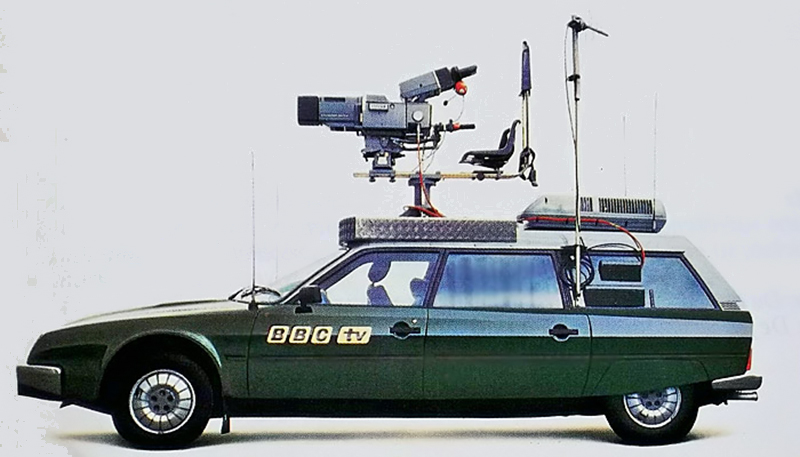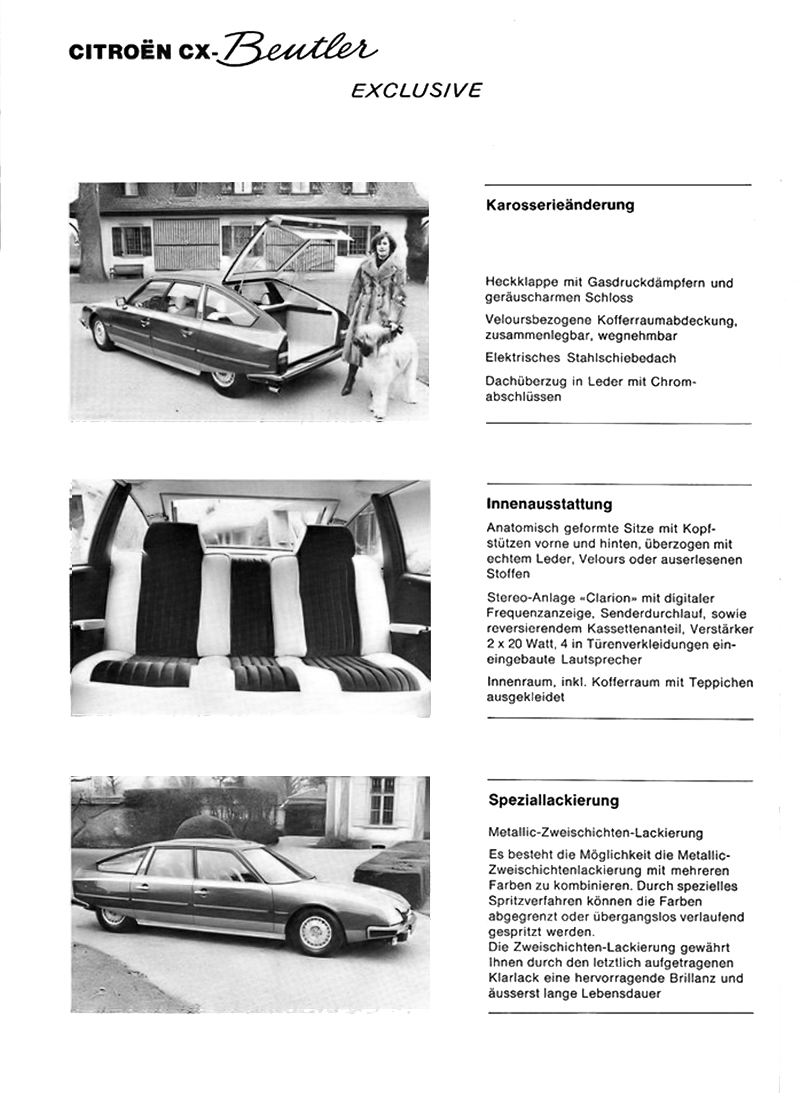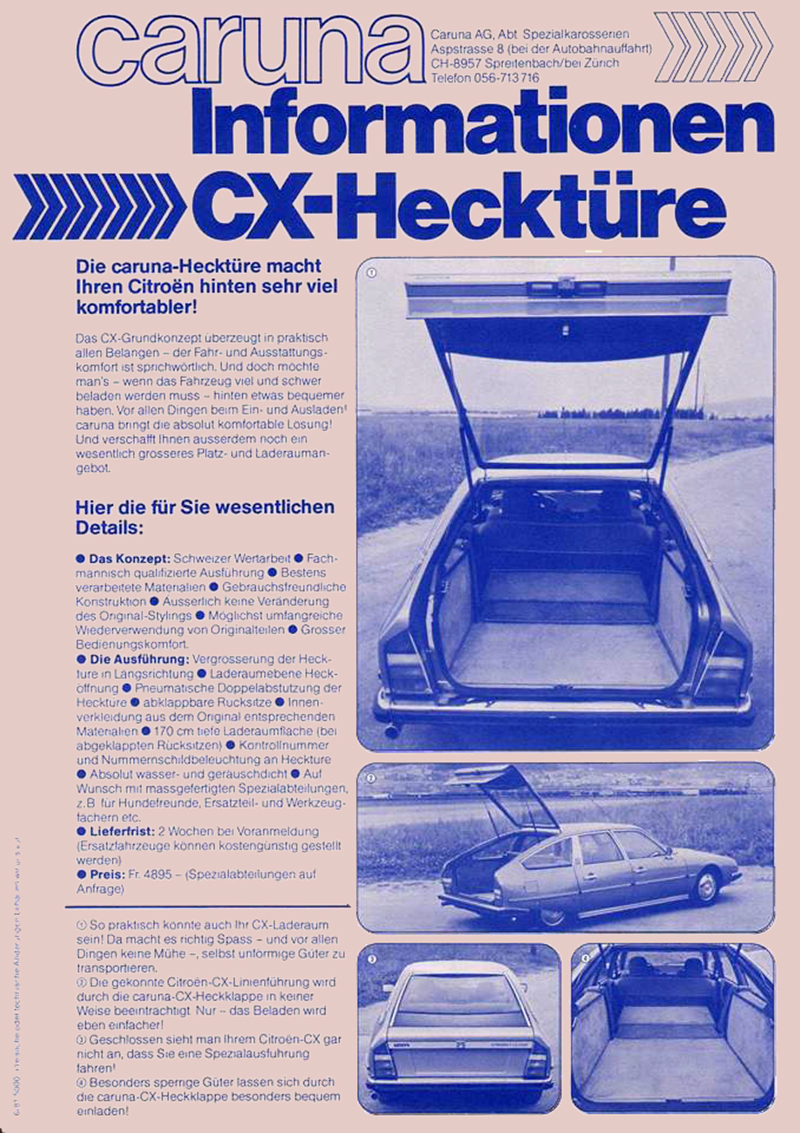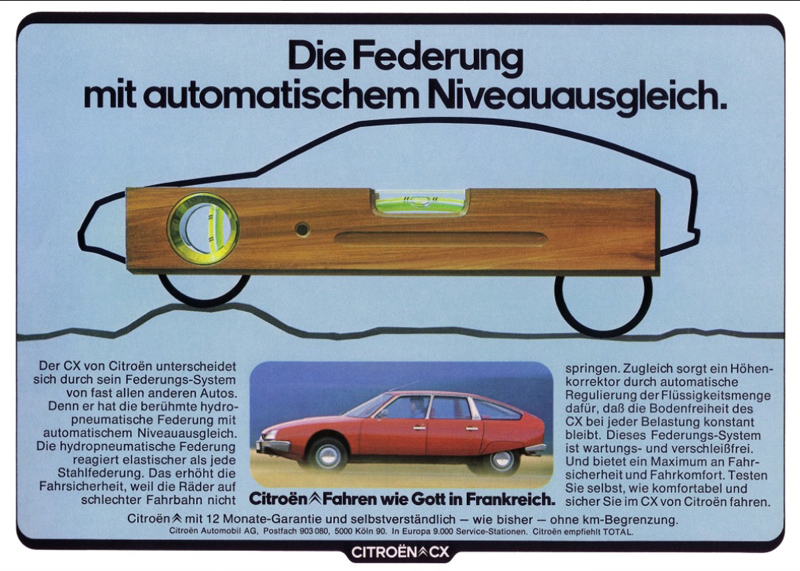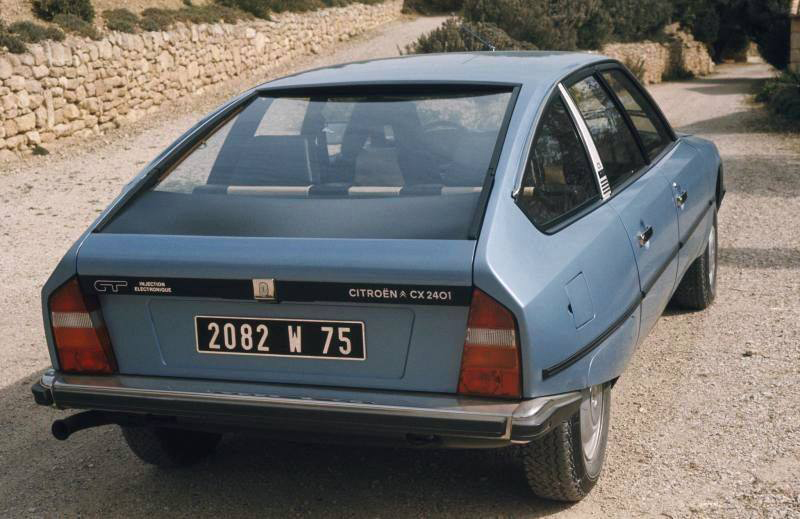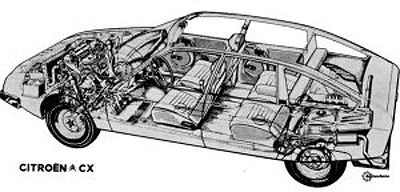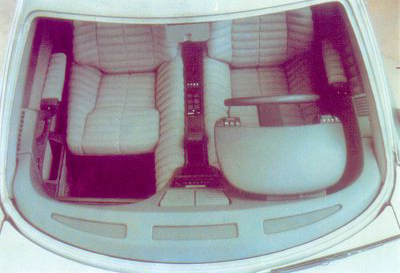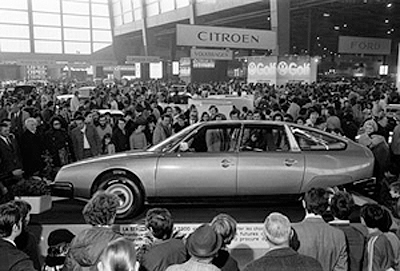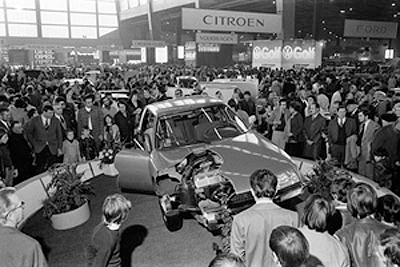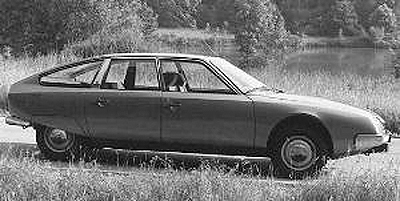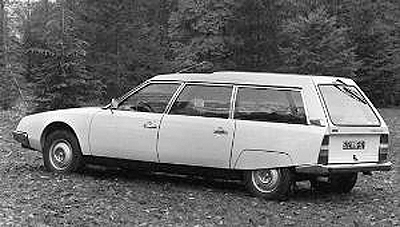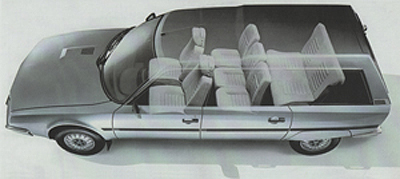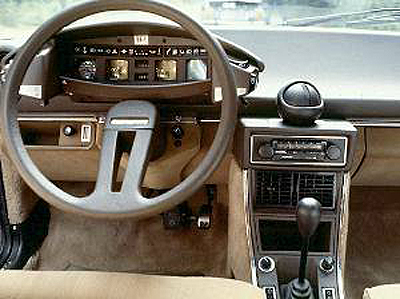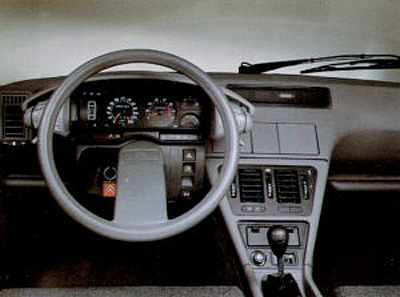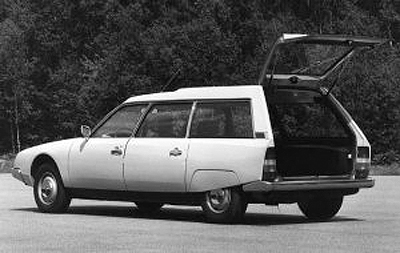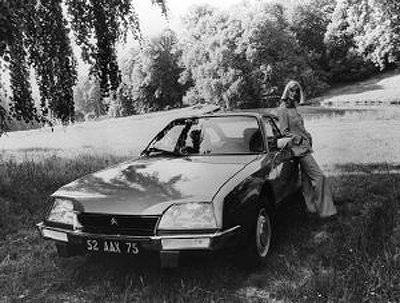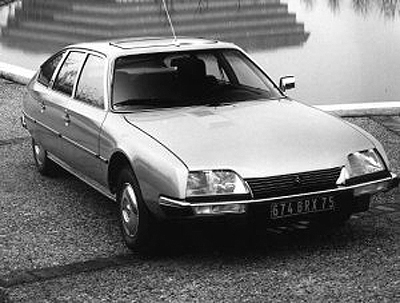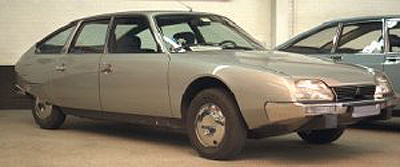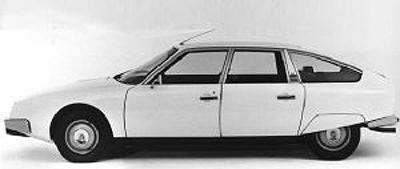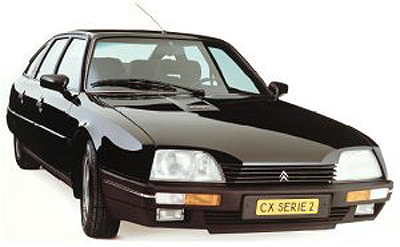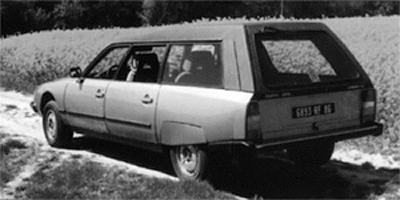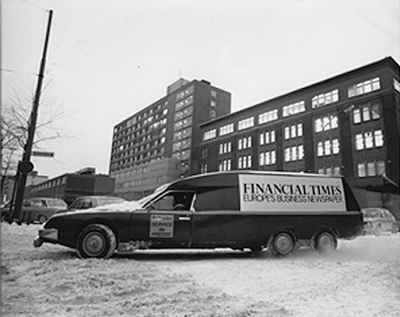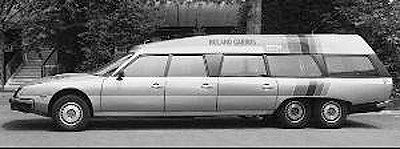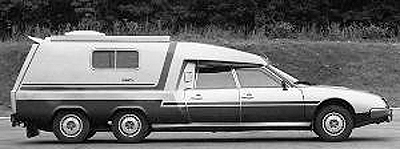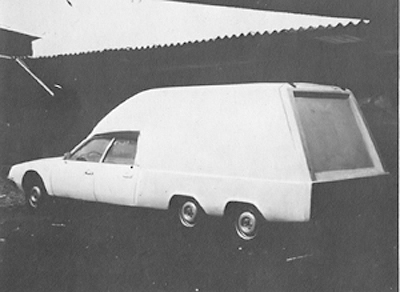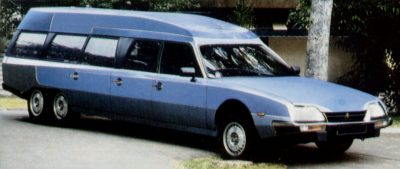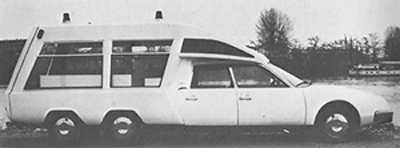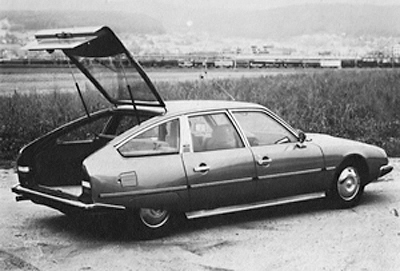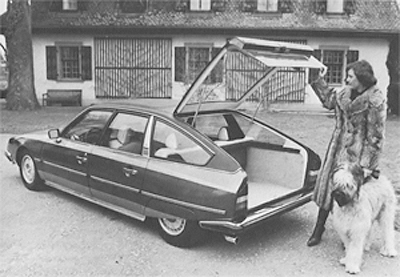|
The CX was launched
at the Paris Salon in 1974. As a replacement for the venerable DS,
the CX was expected to be as big a leap over as that car was over its
predecessor, the Traction, but in the event, it was evolutionary rather
than revolutionary. Its appearance, strongly influenced by some Pininfarina proposals
for BMC, was not unlike a GS
on steroids, it inherited its power plants from the DS and its steering
from the SM.
Below and right a
cutaway CX was displayed at the 1974 Paris Salon
|
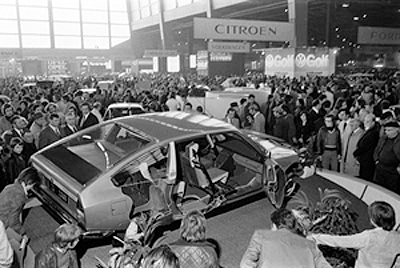 |
|
Suspension was the
well proven hydropneumatic
system. It did however represent a considerable advance over its
predecessor in terms of offering similar levels of accommodation in a
more compact and more aerodynamic package - indeed its name, CX is the French
acronym for coefficient of air resistance or CD.
The
CX won the Car Of The Year Award in January 1975 - the same year that
the Birotor and SM were dropped from production. Peugeot were at the
helm...
Models available at
launch were the CX 2000 Berline, CX 2000 Economique Berline with long
gear ratios and CX 2200 Berline Club.
|
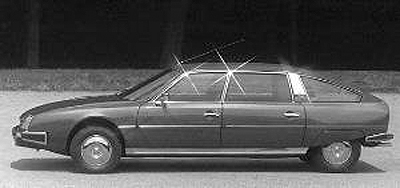 |
|
Above the
CX Limousine employed the bodyshell of the Prestige but with a diesel
engine - thereby setting a trend for luxurious diesel powered cars
|
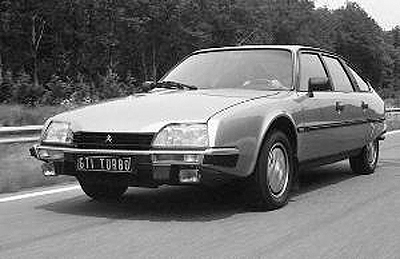 |
|
Above the
Mk 1 CX GTi Turbo
|
|
In
1976, the CX 2200 was available with an optional 3 speed semi automatic
gearbox (C matic) and the CX 2200 Diesel was launched. Pallas trim
levels were available on all saloon models. The same year, the CX 2400
Prestige was launched, featuring a lengthened body with a raised roof.
Also launched in 1976 was the Break estate car with a choice of 2000,
2200 or 2200 Diesel powerplants and two trim levels - Confort and Super.
|
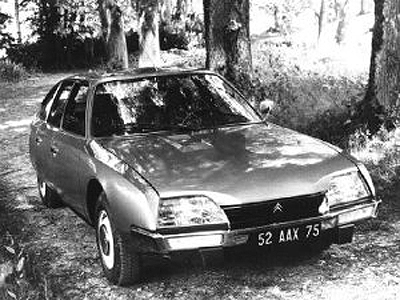 |
|
In 1977, the range
was further extended with the introduction of a fuel injected 2400
engine fitted to the CX Berline GTi and the replacement of the CX2200
with the CX 2400.
In
1978, the injected 2400 engine was available in Pallas and Prestige
guise, fitted with the C matic semi automatic transmission as standard
in the Pallas and as an option in the Prestige. A new CX 2500 Diesel
was also launched that year.
In
1979, the CX 2000 models were superseded by the Reflex and Athena
models, fitted with a new engine of 1 995cm3 capacity, jointly
developed by Peugeot, Renault and Volvo. A five speed gearbox was
available as an option in most models.
In
1980, the Pallas and Prestige were available with a fully automatic
gearbox as an option and the C matic system was dropped. The CX 2200
Diesel also disappeared.
In
1982, all the CX range received new front wings to accommodate wider
tyres on the injection models. The CX 2400 carburettor models
were dropped from the range.
In
1983, the range was rebadged - Reflex became CX 20, Athena became CX 20
TRE, the CX 2500 Diesel Reflex became the CX 25 D while the CX 2400
Injection Pallas became the CX Pallas IE.
In
1984, the CX 25 D was made available with a turbocharger and was called
CX 25 RD Turbo or TRD Turbo (DTR in Anglophone markets) and the 2400
engine was replaced with a 2500 version.
In
1985, two new models were launched - the CX 25 RI was a less luxurious
GTi while the GTi gained a turbocharger and became the CX 25 GTi Turbo.
|
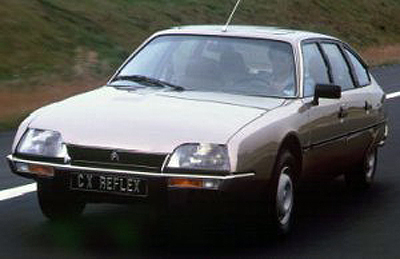 |
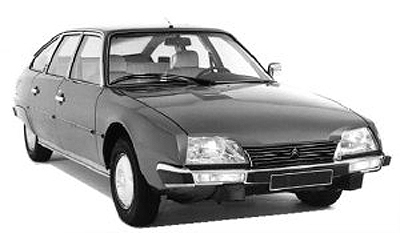 |
|
Below the
1977 Heuliez proposal for a restyle
|
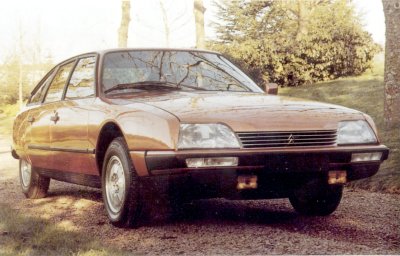 |
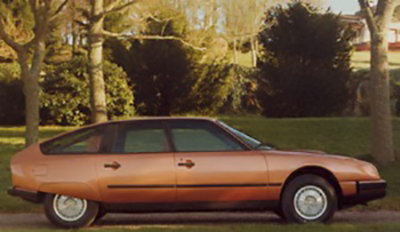 |
|
|
|
Above and below
Michel Harmand's proposals for a restyled interior
|
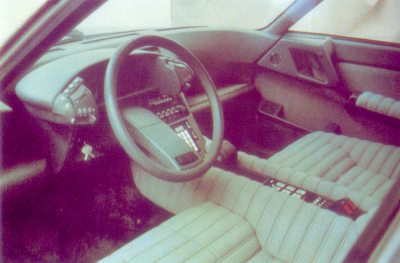 |
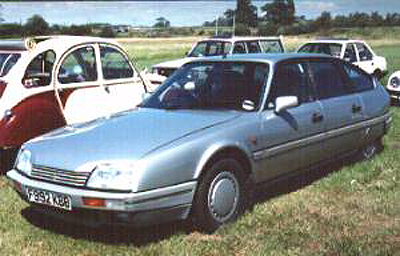 |
|
Above -
Sťrie 2 CX with plastic bumpers
|
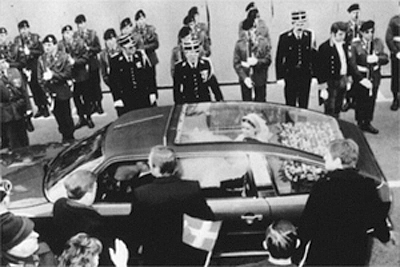 |
|
Above - Chapron
built two Landaulet-Dťcapotables, one of which, fitted with a
plexiglass roof, was used as the wedding car of the Duc de Luxembourg
in 1981.
|
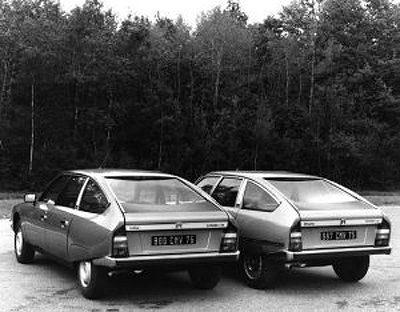 |
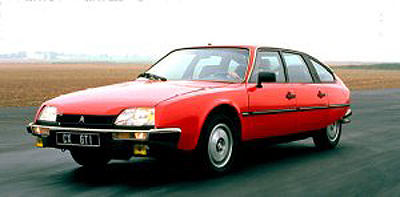 |
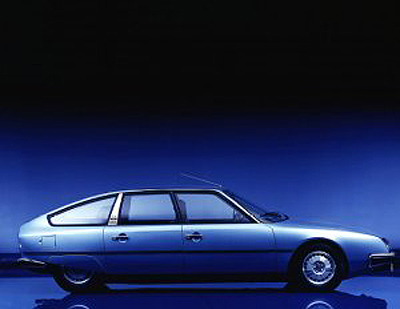 |
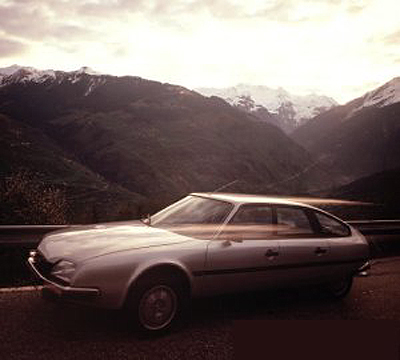 |
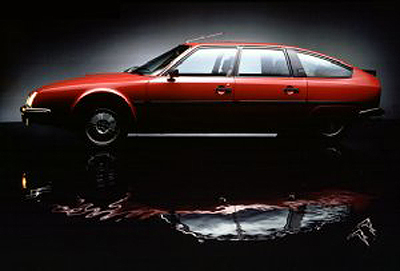 |
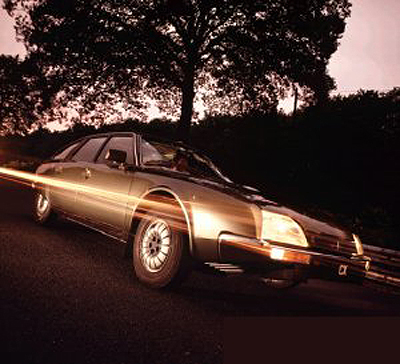 |
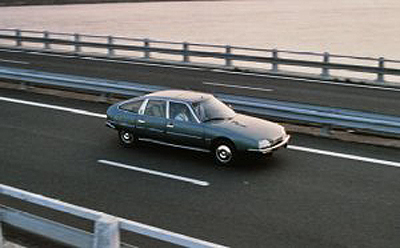 |
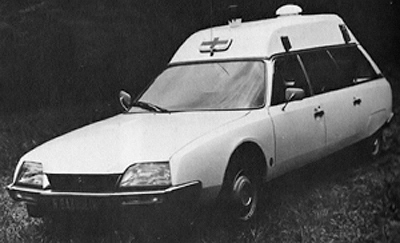 |
|
Above - Baboulin ambulance
with raised roof
Below - Carrier ambulance
|
 |

|
|
|
|
|
|
|
|
|
Above an
early publicity shot for the CX
|
|
Below the
CX Break
|
|
|
|
|
|
Above ghost view of the
Break in Familiale configuration
|
|
|
Above
the dashboard of the CX was an exercise in futurism and ergonomics with
all the controls being grouped around the wheel - to the left were the
(non self-cancelling) indicators, lighting controls and horn while on
the right were the controls for the wipers and washers. The speedo and
tacho were digital but not electronic. The device that looks like an
air freshener above the radio is the ash tray. The dash was
redesigned for the Sťrie II cars and featured
conventional dials below
|
|
|
|
|
|
|
|
|
|
|
|
|
|
In
1986, the CX was facelifted inside and out. New plastic bumpers were
fitted and a new dashboard which preserved the architecture of the old
while looking fresh and modern. The CX 20 was dropped and a new CX 22
TRS was introduced.
Click here for the
Series 2 press release issued by CitroŽn Cars Limited (pdf 9,6mB)
courtesy of Chris Burmajster, ex-editor of the CitroŽnian, the magazine
of the CitroŽn
Car Club
|
|
|
|
In 1988, the CX 25
RI and CX 25 TRD were dropped from the catalogue.
In 1989, the CX
saloons were replaced by the new XM
although the Breaks soldiered on for another year.
Below - Heuliez built this
lengthened Break-Evasion
|
|
|
|
|
|
Above - CX Hollander used by the
Financial Times
|
|
|
|
Above and below
two examples of the Tissier conversions
|
|
|
|
|
|
Above - Tissier Fourgon
|
|
|
|
Above
another Tissier - this vehicle was used as the EEC's official document
carrier, racing between Brussels and Strasbourg every night
|
|
|
|
Above - Tissier ambulance
|
 |
|
Above Unic CX
X-Tender
|
|
|
|
Above BBC Television camera car
|
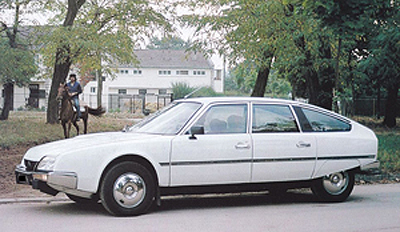
|
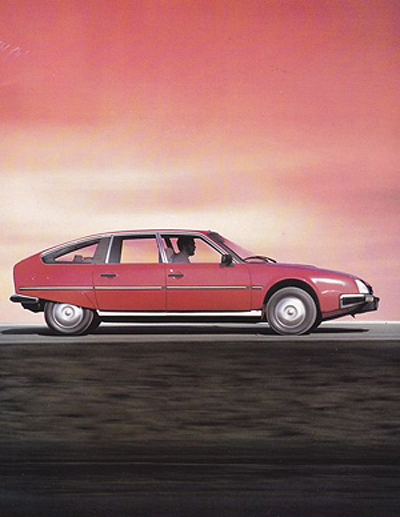
|
|
|
|
Above - Caruna
offered a 5 door hatchback conversion as did Beutler
- below and bottom
|
|
|
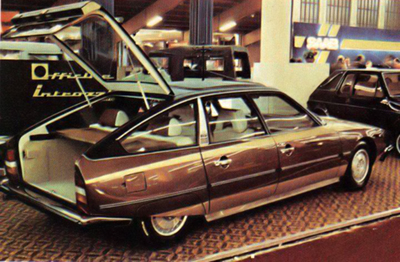
|
|





